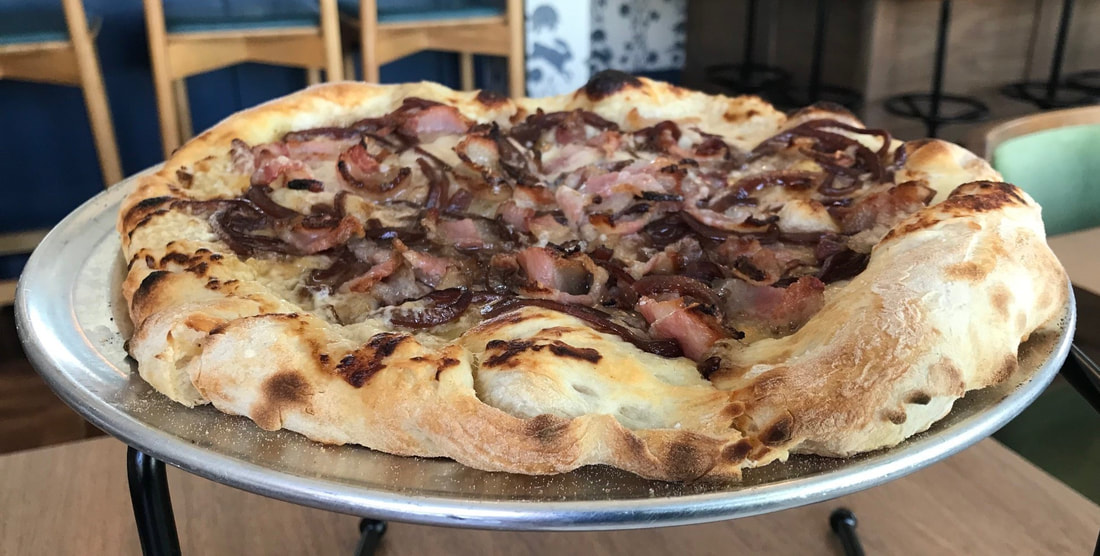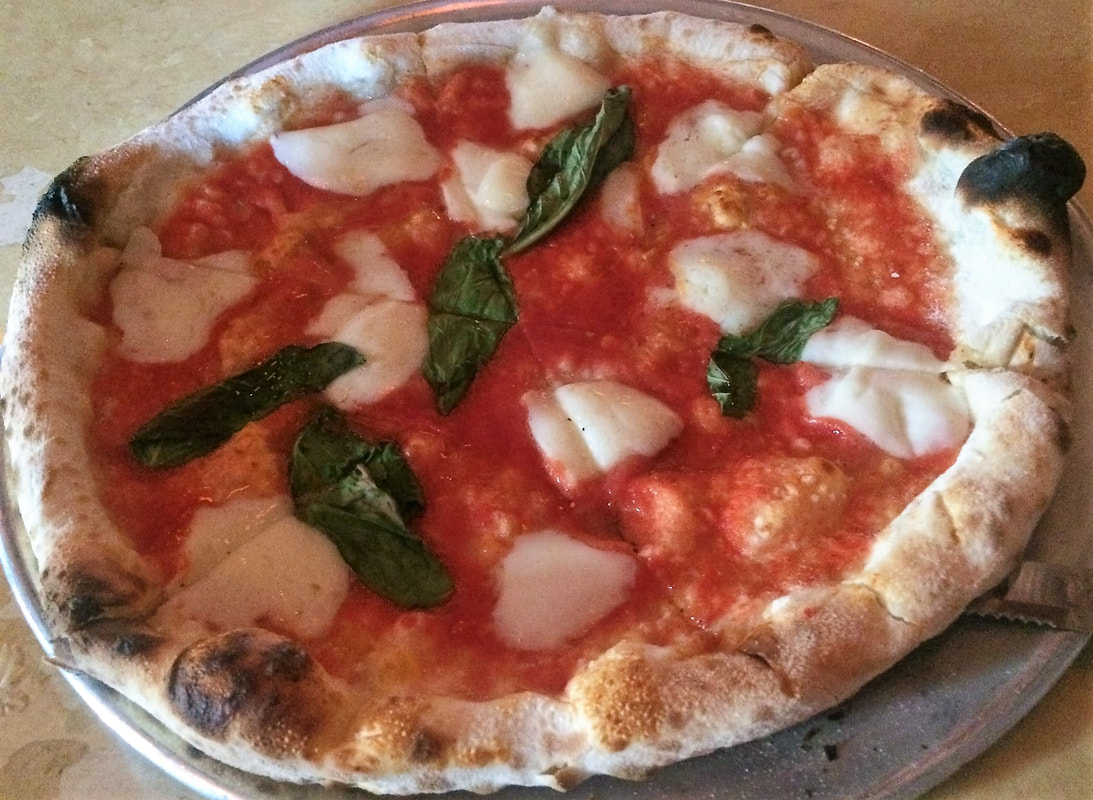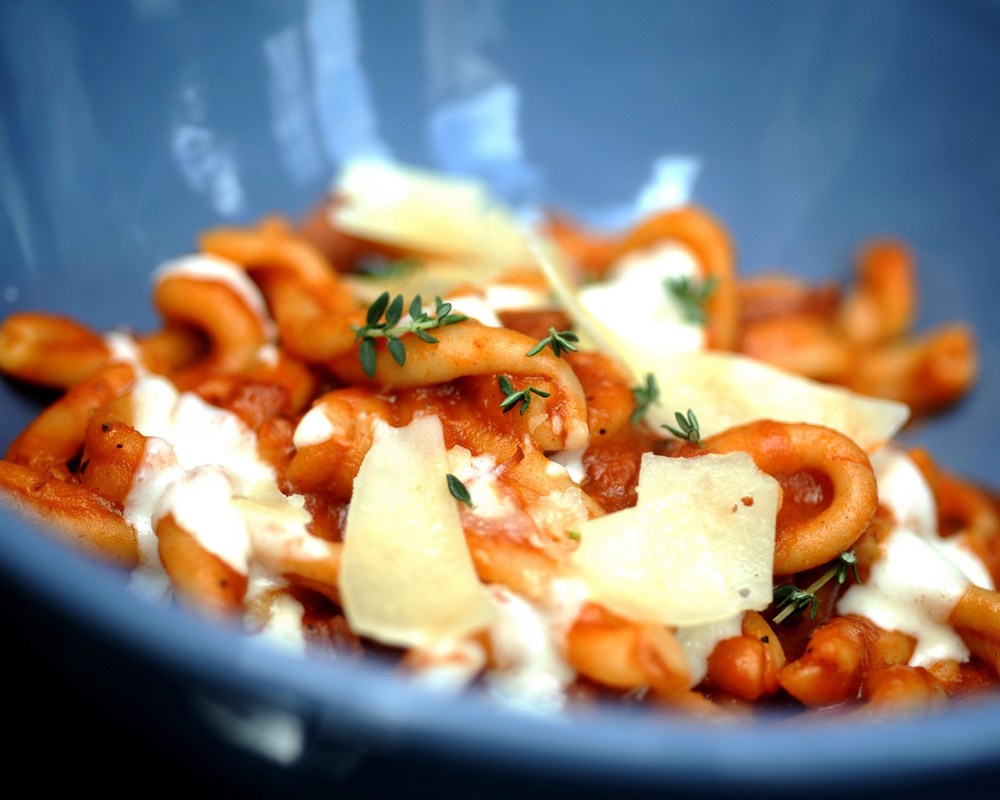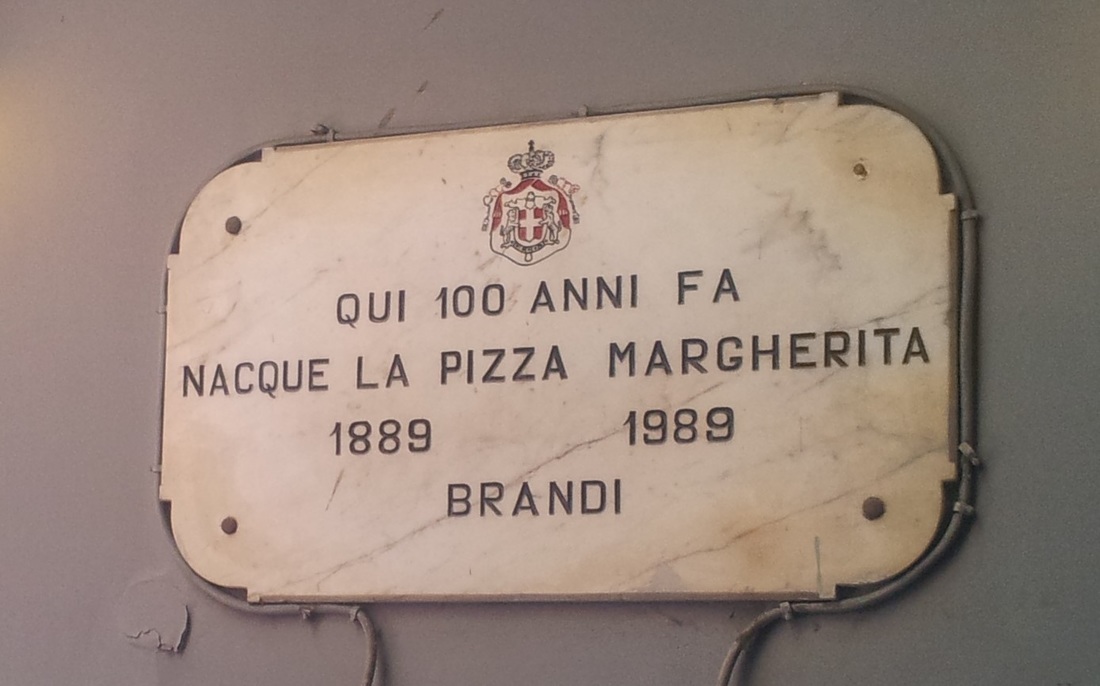This is largely because its headed Terrance Gallivan, who was one of the principals at the acclaimed Pass & Provisions once nearby – in the space now housing Bludorn – that turned out some good pizzas among its many adept preparations. The pizzas here are different than what I remember from Provisions, but superb. Better, in fact. It begins with the crust, of course, the platform for each of the individually sized pizzas. These are puffy, with a slightly raised crown at its edges and a bottom that is nicely charred even though cooked in a gas oven. The crusts are light and flavorful throughout, with a welcome fresh taste that is delicious to the last bite, something that’s not true for most pizzas. These have had the nimbleness and similar quality to a number of top-notch pizzas I had in Italy last summer, if in a different style from those.
The pizzas come in a choice among a half-dozen intelligent and enticing topping combinations. The minimalist Mozzarella, also with tomato sauce and basil leaves, is its version of the classic margherita that’s an easy order. The Guanciale featuring thin slices of that cured pork jowl complemented by plenty of caramelized red onions and black pepper is another star. Another one is the seemingly popular Chorizo that’s a bit of a taste of Spain, with the Spanish sausage, Mahon cheese and piquillo peppers all under a bed of bitter arugula. There’s one centered around smoked mushrooms, and another with tomatoes both sliced and sauced with Calabrian chiles. It’s tough to go wrong with any of the six options, though the Mortadella, with vinegared onions and a pistachio pesto, mozzarella and tomato sauce was wetter than it should have been on a recent visit, though still very enjoyable.
In a big city with a deficit of quality pizzerias, the terrific pizzas are a start and a draw for many, but this, a smart, comfy place will appeal to frequent diners even when not in the mood for pizza. The cooling crudos are mostly seafood including East Coast oysters on the half-shell and four appealing and unique combinations: tuna with pistachio and ‘nduja spice; smoked kampachi with pumpkin seeds and a Japanese flavors; snapper with pickled mangos, olives and chile peppers; and the Italian mint nepitella-cured salmon with apples and hazelnut. And also a take on steak tartare, a dish that has become more commonly seen here again.
The third section of the succinct main menu, Starters, have proven to be useful complements to the pizzas on many tables, a gorgeous Caesar salad, spicy cucumbers, arancini, and sausage done saltimbocca-style with prosciutto and sage. It also has the one sandwich, The Hoagie, a New York-inspired sub with the Philly name, charmingly arrives wrapped in paper, cut in half and served on a small plate. It’s mortadella, spicy hot coppa, slices of provolone and pickled vegetables, with the liquid seeping into the fresh and terrific house-made bun that’s densely topped with sesame seeds. It’s the best sandwich I’ve had in the while, and making for a near-perfect lunch the other weekday. There’s also a trio of desserts, if you’ve got room, takes on tiramisu and panna cotta along with a very fun, chocolate-shelled soft serve.
Near where Montrose blends into Midtown and just a block or so from Cuchara and where Fairview’s lane widen and then double in number and turn into Tuam – be careful when crossing the street from its parking lot – the small L-shaped interior with banquettes, small tables and a bar area is filled with tight spaces, but the vibe is definitely comfortable, but more. There’s a greenish hue to the place and amusing wallpaper festooned with silhouettes of jumping rabbits, swallows, turtles and butterflies amidst dangling vines. Quaint and attractive.
You can enjoy yourself here without even partaking in the output of its serious kitchen. There’s a full bar and an earnest cocktail program led by a slew of house creations all bearing the name of a Springsteen song. The wine program is Italian-heavy and very food friendly. Of the almost thirty wines, two dozen are Italian including a half-dozen from Piedmont, four Nebbiolos and a Sauvignon from the Collio There is even the current vintage of the usually good, Ampeleia Unlitro, a tart, Grenache-heavy blend from the Tuscan coast that pleasingly comes with a third more wine than the typical bottling. Most bottles are priced in the $50 to $60 range with nothing reaching three digits, something welcome these days. There’s also some choices of amaro if you’ve happened to eat too many slices of pizza.
There’s noticeable Italian subtext throughout, Italian done well. In addition to the pizzas and pastas Gallivan once created at Pass & Provisions, he worked kitchens at acclaimed Italian restaurants in Manhattan that had three stars (out of four) from The New York Times, Fiamma and Alto, following in the shoes of top chefs Scott Conant and then Michael White in heading the kitchen of the latter. The New York roots are evident, too. If you look hard, you can spot a small figurine of Don Mattingly that’s mounted in a place of honor in a case at the end of the bar.
Elro is an easy place to like, especially if you like good pizza, that’s bound to be even more likeable once food and drink can comfortably be consumed in its outside.
Elro
2405 Genesee (at Fairview), 77006
elrohtx.com
The Guanciale pizza at Elro















 RSS Feed
RSS Feed

